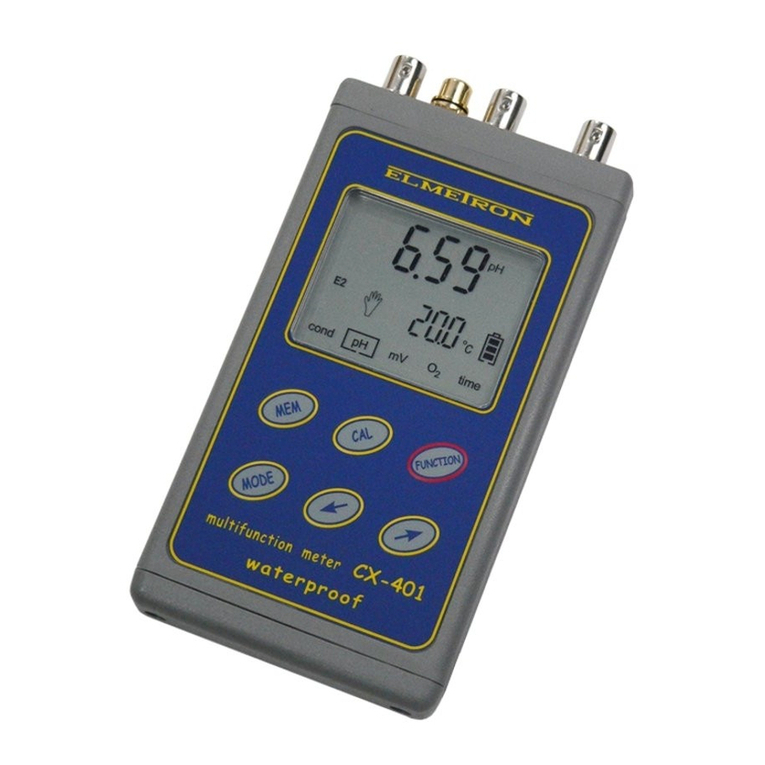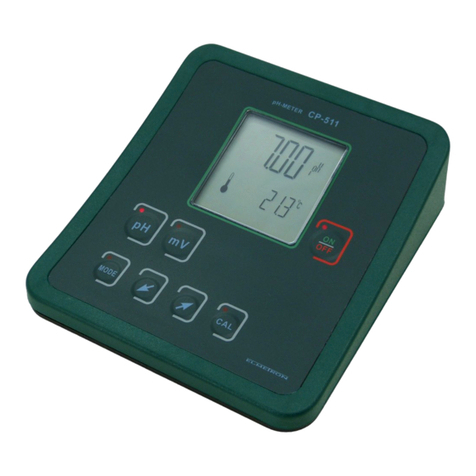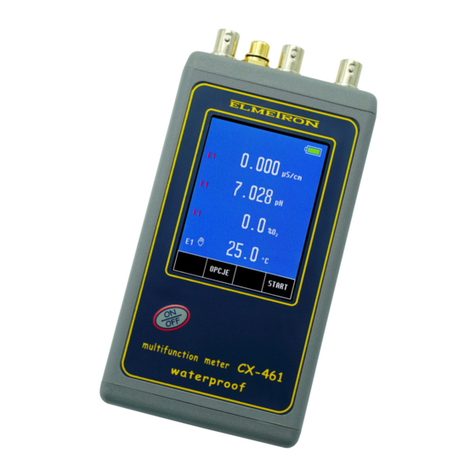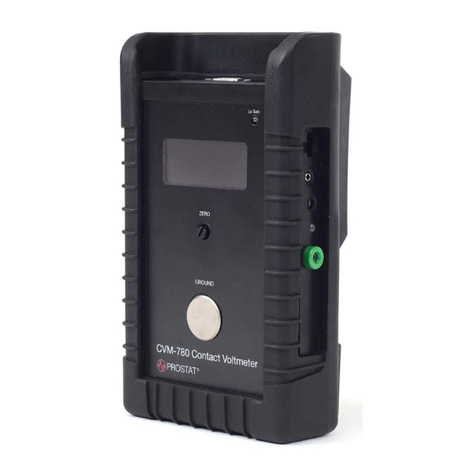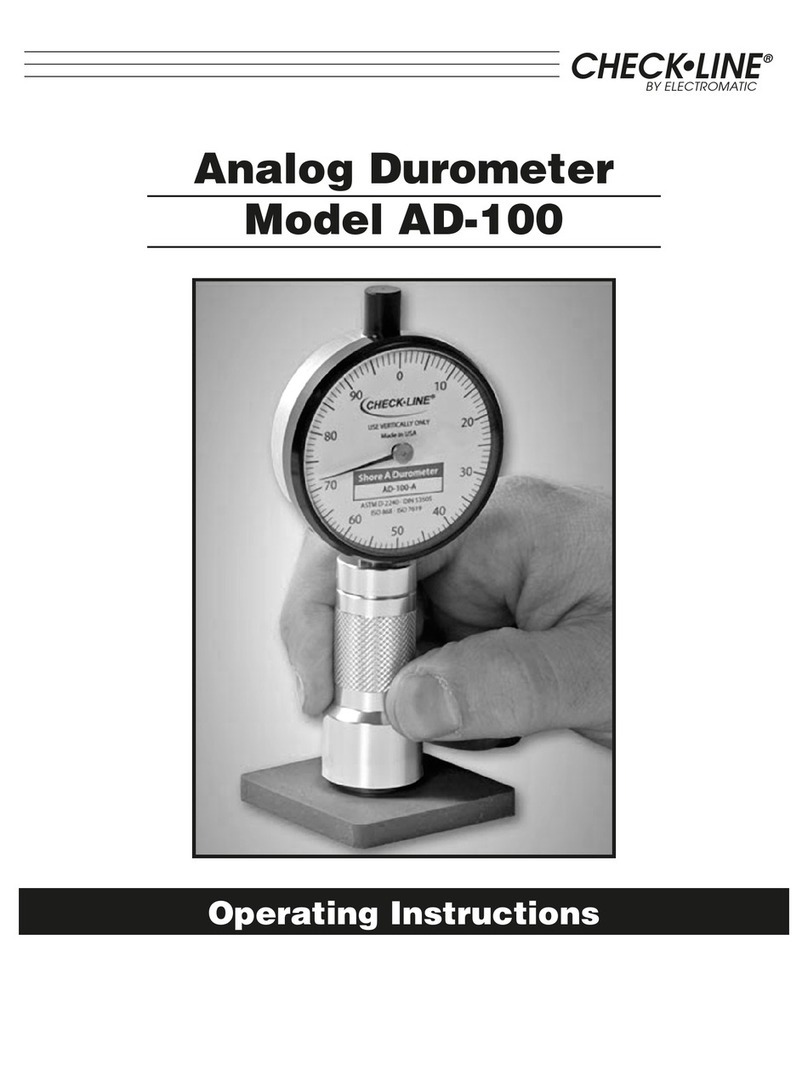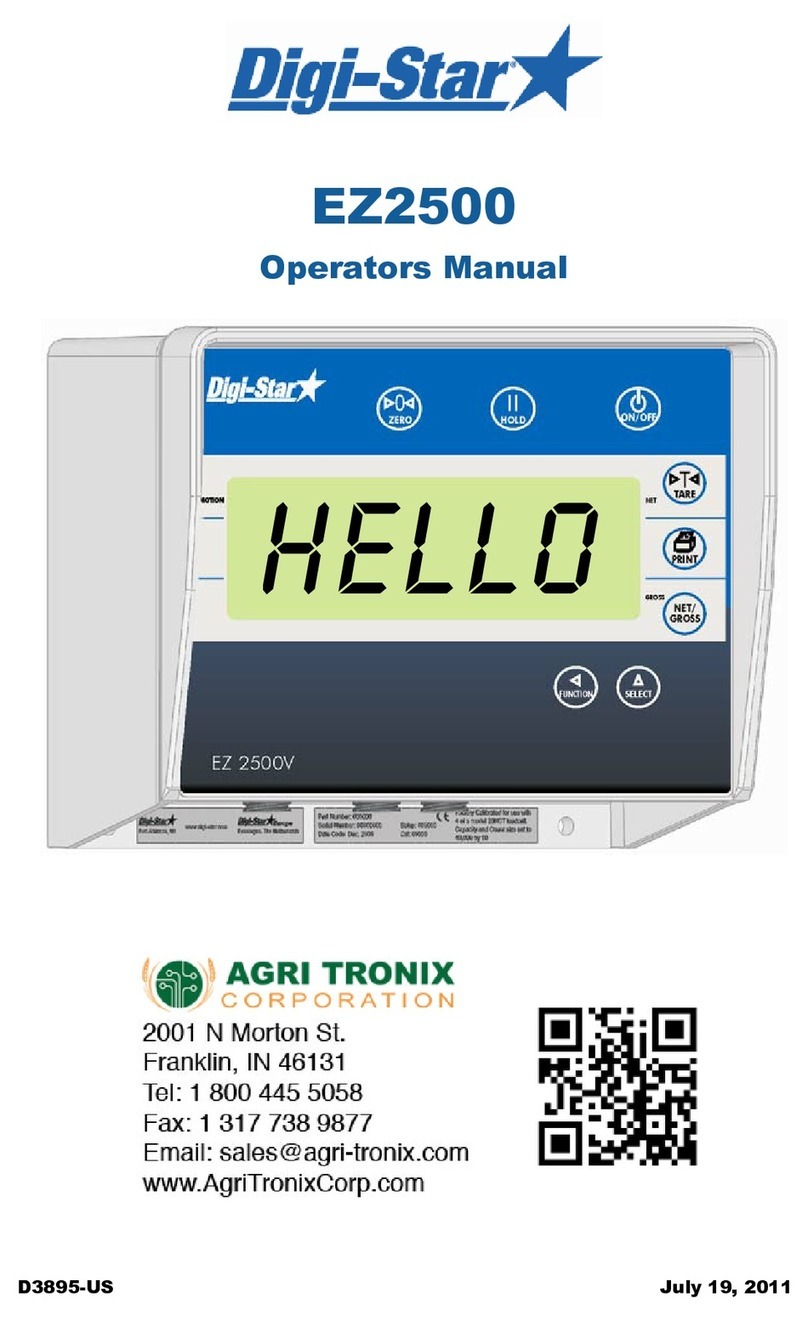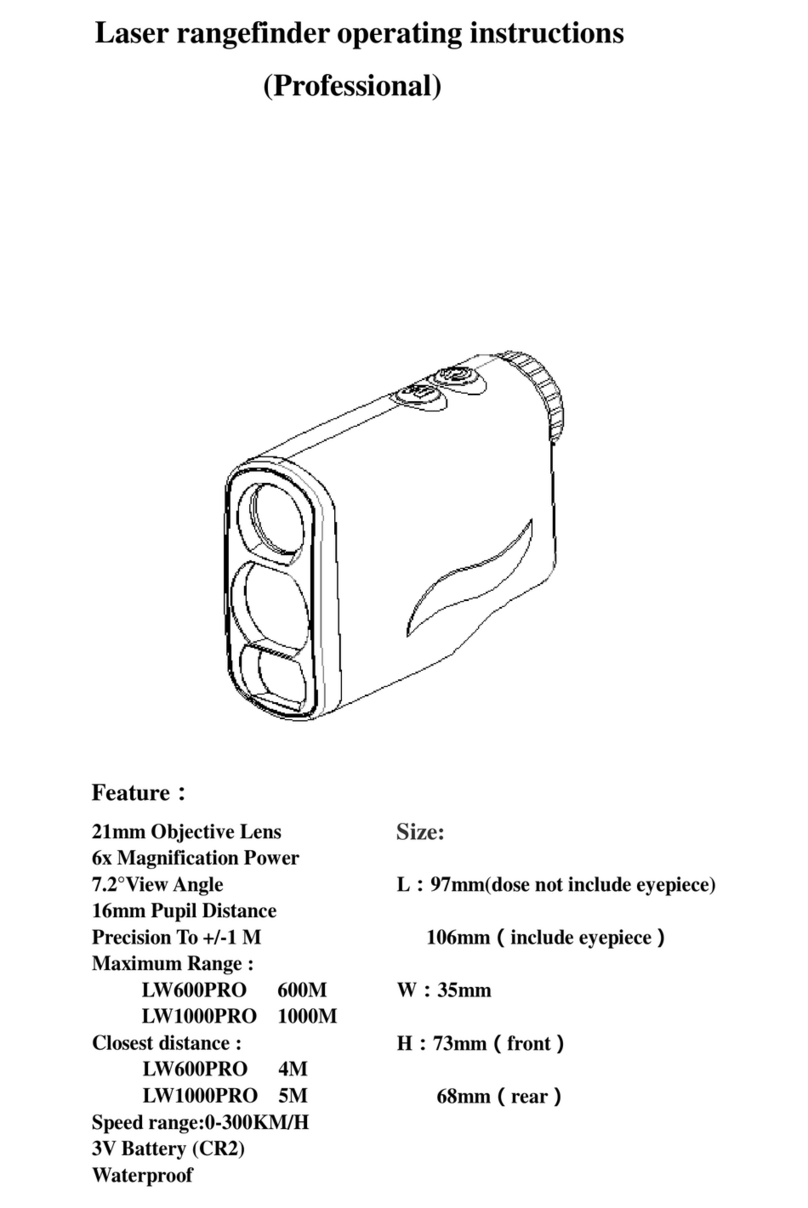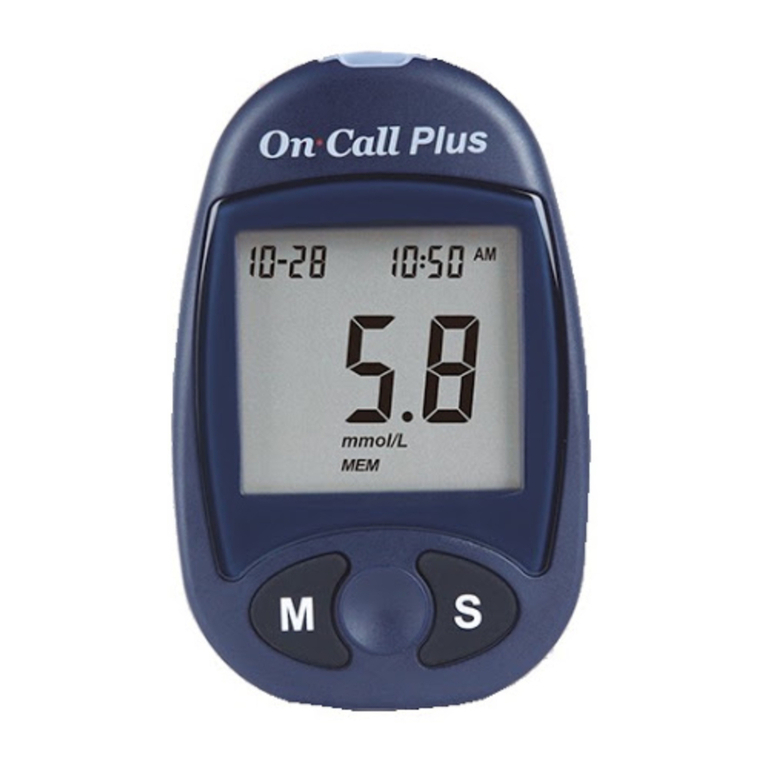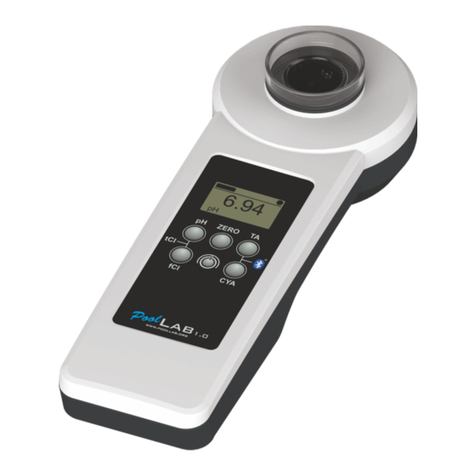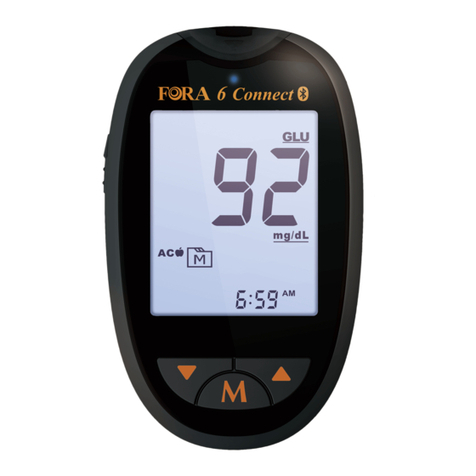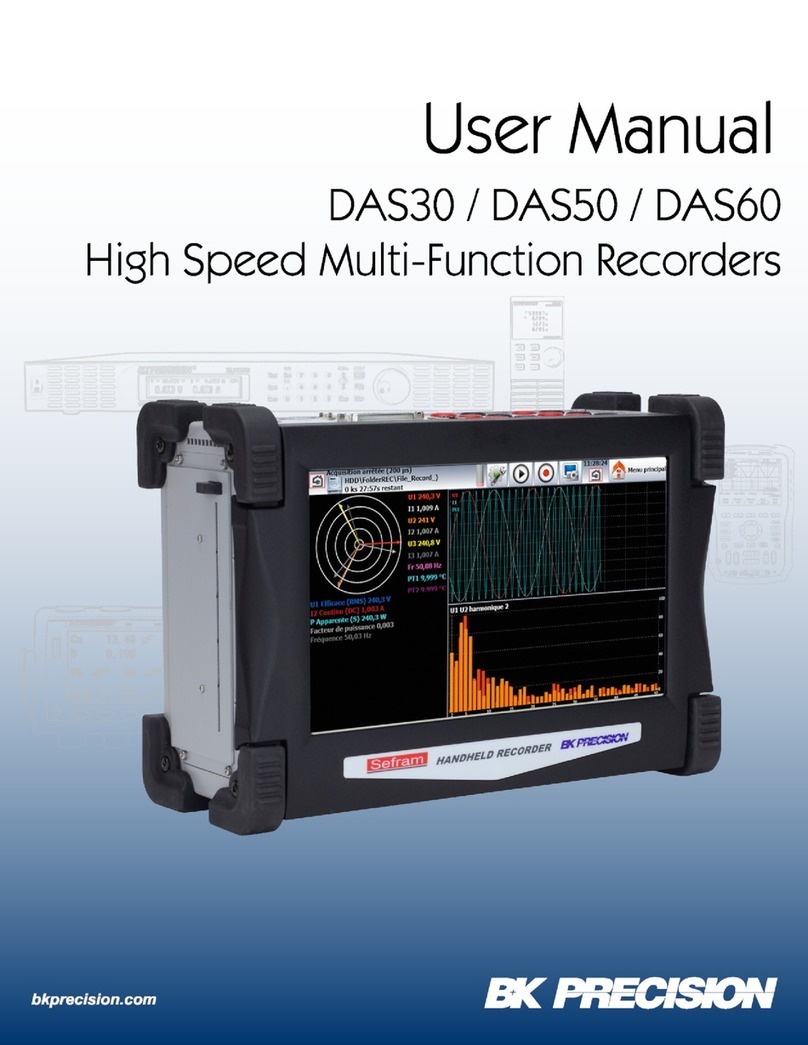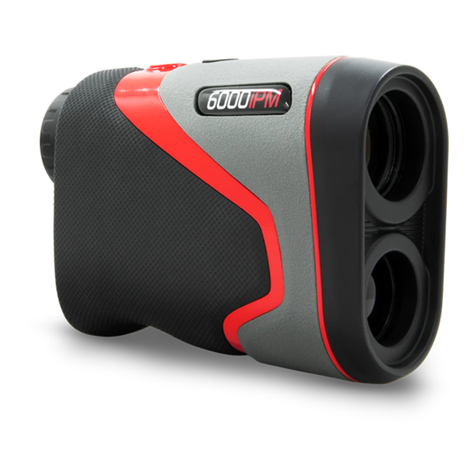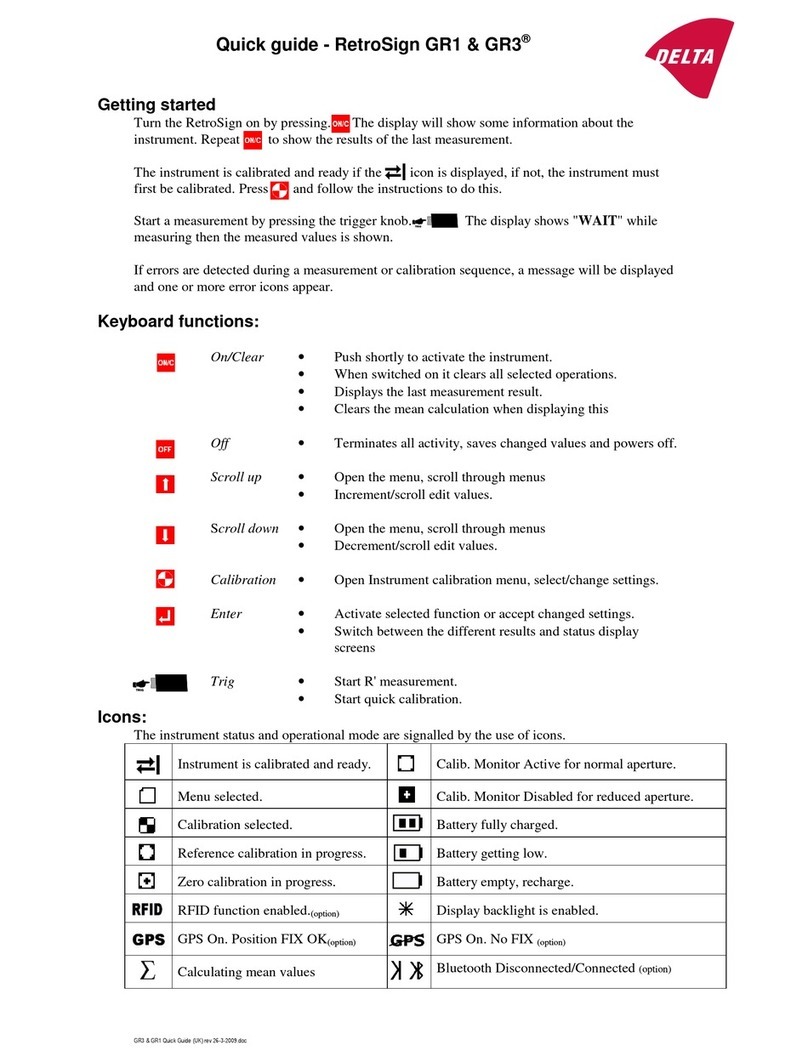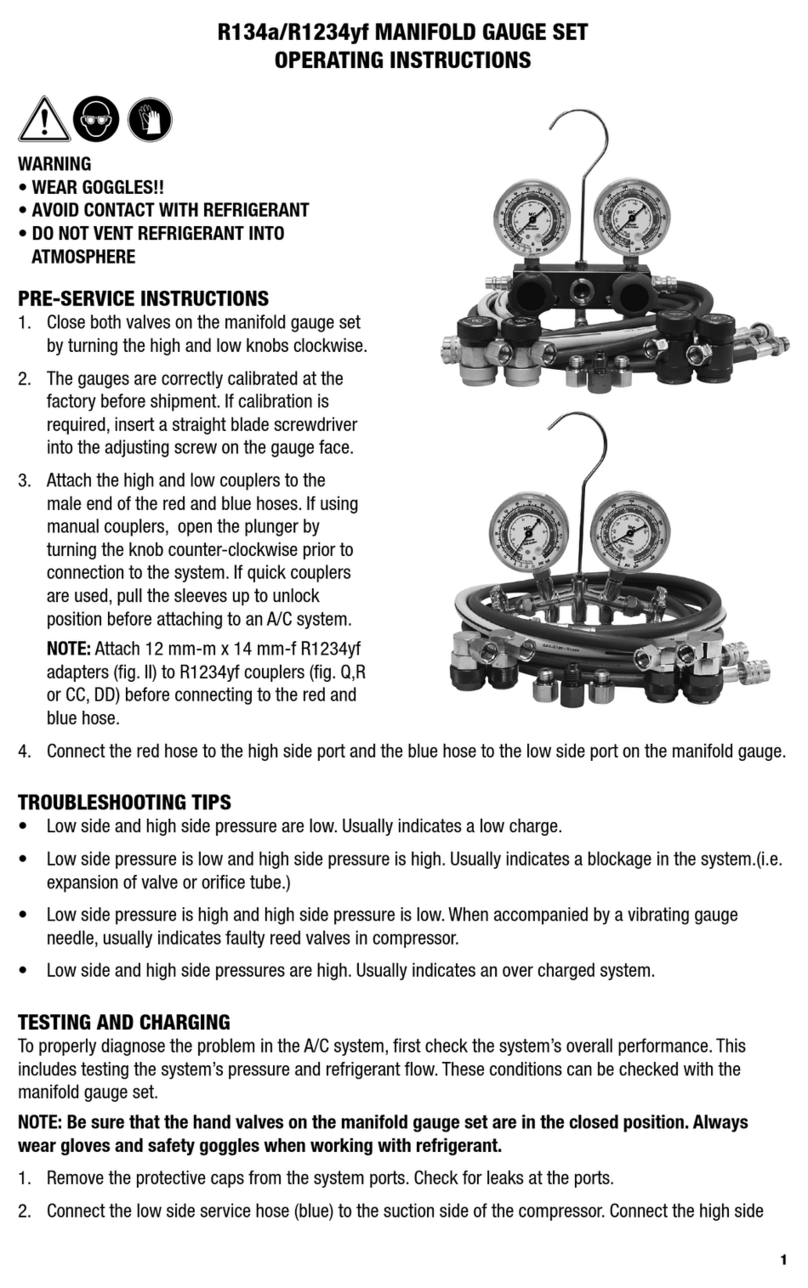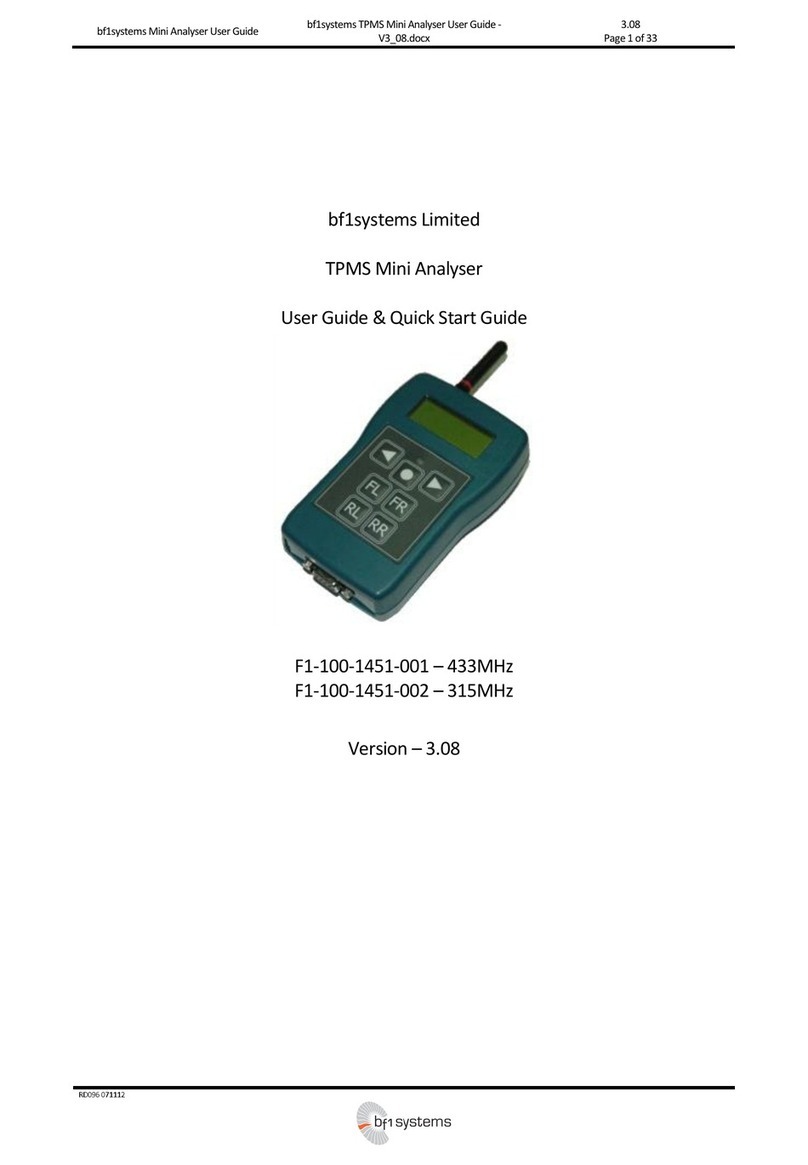ELMETRON CP-411B User manual

WATERPROOF pH-METER
CP-411
USER‘S MANUAL


USER‘S MANULAL
WATERPROOF pH-METER
CP-411
Before starting work please read the instruction carefully.


CONTENTS
I. INTRODUCTION 1
1. Exploitation notices 3
2. Characteristics of the meter 4
3. What is the meter designed for 5
4. The outside view 6
5. Switching the meter on and off 8
6. Preparation to work 9
6.1. Choosing the measuring function 9
6.2. Choosing the kind of temperature compensation 10
II. pH MEASUREMENT 11
7. Preparation of the pH electrode 13
8. Calibration 14
8.1. Calibration with automatic temperature compensation 15
8.2. Calibration with manual temperature compensation 16
9. The electrode parameters readout 16
10. pH measurement 18
10.1. Measurement with automatic temperature compensation 18
10.2. Measurements with manual temperature compensation 19
11. Notices about the temperature compensation and interpretation of the
measurement results 20
III. REDOX AND TEMPERATURE MEASUREMENT 23
12. Redox potential measurement 25
13. Temperature measurement 25
IV. OTHER 27
14. Readout of the software version number 29
15. Power source and changing the battery 30
16. Technical data 31
17. Equipment 32


- 1 -
I. INTRODUCTION

- 2 -
User‘s manual for CP-411 pH meter v5.30

- 3 -
1. Exploitation notices
Dear User!
We present you a device distinguished by accuracy according to the
technical data and by a high stability of the displayed results. We believe that
the measurements will not cause you any trouble and that the meter will
operate without any inconvenience. Wide range of additional functions
requires careful reading of the manual, in other case some of the
features may stay unused or using the meter may be troublesome.
Employing of good-quality electrodes and replacing them after a suitable time
ensures obtaining high measuring parameters. We want to call your attention
to the fact, that this equipment has a much shorter working life than the
meter. Typical symptoms of an improper operation of the electrode are:
deterioration of final result stability and its flowing as well as significant
measuring error. Part of the users has problems arising from employing
electrodes not being preconditioned before the measurement or making
measurements without removing the shielding ring from the liquid
junction or with a plugged junction. To avoid such situations it is
necessary to choose a proper kind of electrode for solutions which are going
to be measured e.g. special electrodes for the sewage, liquids with deposits,
meat cheese etc. Therefore, if you observe improper operation of the device,
please take control measurements with another electrode or check the used
electrode with another pH-meter. Generally, the deterioration of the
meter’s work is caused by the electrode and not by the meter.
The essential feature of our products is their low failure frequency. However,
if your meter fails, our firm will immediately perform its warranty repair.
We wish you a pleasant and trouble-free work with our meter.

- 4 -
User‘s manual for CP-411 pH meter v5.30
2. Characteristics of the meter
The CP-411 pH meter belongs to the newest generation of measuring
devices which offer wide range of additional functions. The meter ensures
high accuracy and repeatability of the readings and is easy in use. Two kinds
of power source: battery and power adapter enable work in the field and long-
lasting measurements in the laboratory. Electronic elements of the newest
generation used in the meter have made its memory independent from power
supply and have ensured very low power consumption what greatly prolongs
the operation time on 1 battery.
The meter is equipped with large custom LCD display, on which the pH,
redox potential or temperature value is displayed. Waterproof housing makes
working in difficult conditions possible. Small size and weight make the meter
very handy especially during field work.
Main features of CP-411 are:
-high accuracy and stability of readings;
-automatic temperature compensation;
-pH electrode calibration in 1 to 3 points;
-automatic recognition of pH buffers and standards;
- possibility of entering the standard solutions values;
- the electrode slope is stored in the memory independently from power
supply;
-system protecting the meter against damages caused by connecting the
battery inversely;
-information about the battery condition ( );
- automatic switch off function.

- 5 -
3. What is the meter designed for
Waterproof pH meter CP-411 is precise and easy-to-use meter designed for
hydrogen ion concentration measurements in pH units and redox in mV units.
The meter may be also used for accurate temperature measurement in
solutions and air in °C. The meter may be used both for work in the field and
measurements in the laboratory.
Waterproof housing enables work in difficult weather conditions or in humid
environment.
The CP-411 pH meter is being used in food, chemical, pharmaceutical and
power industries, in water treatment stations, laboratories, agriculture,
universities, scientific laboratories etc.
The meter is prepared to work with all types of combination pH electrodes and
redox electrodes equipped with BNC-50 connector. It is possible to connect
the meter with two electrodes (pH measuring and reference) by special
adapter offered as additional equipment. CP-411 co-operates with Pt-1000
temperature probe with Chinch connector.

- 6 -
User‘s manual for CP-411 pH meter v5.30
4. The outside view
On the front wall of the meter there is an LCD display (Pic. 1) which,
depending on the chosen function, shows:
-the pH readout in pH units;
-the redox potential readout in mV.
Choosing functions is described in the chapter 6.1.
Simultaneously, below the readout, the temperature value in
0
C is displayed.
Symbols of units are displayed next to the readout.
In case of disconnecting the temperature probe the meter switches to manual
temperature compensation mode (the symbol disappears). The battery
condition is signalised by the symbol. The keyboard placed below the
display is used for switching the meter on and off, choosing the measuring
function, calibration and entering the parameters.
The keyboard is equipped with the following keys:
- switching the meter on and off.
- pressing shortly enters the mode of choosing the measurement
function (pH or redox potential); holding returns the meter to the
measurement mode;
- holding this button in the pH measurement function enters the
calibration mode (CAL symbol displayed). Pressing shortly in this mode
records the calibration result in the calibration point;
, - buttons used for entering parameters.
In the upper wall of the meter there are inputs placed with the symbols given
below:
F - BNC-50 for connecting combination pH electrode, measuring pH
electrode or redox electrode;
t- Chinch input for connecting the temperature probe;
P- power adapter input.

- 7 -
Pic. 1.

- 8 -
User‘s manual for CP-411 pH meter v5.30
5. Switching the meter on and off
After switching it on with the button, the meter tests the memory and the
display on which all symbols are displayed (pic. 2).
Pic. 2.
If the test ends successfully, after about 1.5 s the meter switches
automatically to the measuring mode, in which it was switched off. If the
sign is displayed, it means that the meter has lost the factory settings and
requires service. If after 1,5 s all symbols are continuously displayed, it
informs that the calibration parameters of the electrode have been lost.
After pressing the button the meter adopts standard parameters:
-drift 0 pH, slope 100%
and enters the measuring mode. It will be necessary to calibrate the pH
electrode.
The meter is switched off by pressing the button. To save the battery,
the meter switches automatically off after 10 minutes of non-use. This
function is automatically deactivated when working with power adapter or
during calibration.

- 9 -
6. Preparation to work
Before starting work:
- connect the power adapter plug to the Pinput, if work with the power
adapter is planned;
-in case of pH measurements join the combination pH electrode to BNC-
50 input F;
-in case of using a measuring and reference electrode connect them the
adapter, available optionally;
-connect the temperature probe to the Chinch temperature input (t);
- switch the meter on by pressing the button.
6.1. Choosing the measuring function
The CP-411 pH meter may work in the pH or redox potential measurement
mode.
In order to switch the measuring function:
-press the button, until the lower row of the display shows the
symbol and the upper row – currently active measurement function;
-
with the button choose:
- pH measurement
- redox measurement
-by pressing and holding the button return to the measurement mode.
Pic. 3

- 10 -
User‘s manual for CP-411 pH meter v5.30
6.2. Choosing the kind of temperature compensation
The meter switches to the automatic temperature compensation mode after
connecting the temperature probe. Next to the reading the symbol is
displayed (pic. 4). The measurement will be compensated to the value of
temperature measured by the probe.
Disconnecting the temperature probe switches the meter to the manual
temperature compensation mode (the symbol disappears) and the value of
the temperature introduced by the user in the way described below is
displayed in the place of the temperature reading. This value will be adopted
for compensation.
Pic. 4
6.2.1. Entering the temperature value for manual temperature
compensation
To introduce the temperature value for manual temperature compensation:
-disconnect the temperature probe (the symbol disappears);
- with the , buttons enter the chosen temperature value.

- 11 -
II. pH MEASUREMENT

- 12 -
User‘s manual for CP-411 pH meter v5.30

- 13 -
7. Preparation of the pH electrode
The electrode should be prepared to work according to the manufacturer’s
instructions. If the instructions weren’t given please follow the steps:
-new electrode should be put into saturated KCl solution for about 5 hours:
-before starting measurements, protecting rings (if used in this kind of
electrode) should be removed. The ring placed on the junction – the lower
part of the electrode - should be removed upwards along the electrode’s
body and the upper, which protects the KCl refilling hole, downwards
along the body. Removing the lower ring is essential, in other case the
electrode won’t measure. The upper ring should be removed during
measurements of high-temperature solutions or to protect the junction
during measurements in solutions with deposits or oils. Sometimes
instead of ring a cork is used;
-during measurements in laboratory it is advisable to use an electrode
holder;
-after every measurement the electrode should be washed in distilled
water;
-excess of liquid on the electrode should be removed by gentle touching
the glass with a tissue paper;
-after work the electrode should be stored in the KCl solution. Protecting
rings should be put on the junction and the upper hole;
-in case of long breaks between measurements the electrode should be
stored, after drying, in the packaging;
-after taking the electrode out of the package the deposit, which is likely to
appear, should be removed with use of water;
-before use, the electrode should be placed in saturated KCl solution for
about 1 hour;
-if the construction of the electrode enables refilling the electrolyte, it
should be controlled and refilled periodically by the upper hole in the
electrode’s body (usually as the electrolyte a KCl solution is used).
-If the electrode is equipped with a small container (bottle) put on its end,
the bottle should be taken off before measurements by unscrewing the nut
gently and taking the bottle down the electrode’s body. After the
measurements the bottle should be put on again. Such electrodes are not
equipped with the protective ring on the junction and do not require
activating the membrane.
Caution: storing the electrode in distilled water shortens its life span and
may heighten the measurement error.

- 14 -
User‘s manual for CP-411 pH meter v5.30
8. Calibration
Before starting measurement with new electrode, after long-lasting use or
before making measurements which require high accuracy the electrode
connected with the meter should be calibrated. Results of measurements
made without calibration will be burdened with a significant error. Calibration
is made in buffer solutions. It consists in comparing pH value of buffer
solutions with the value displayed by the meter and next in automatic
introduction of correction which is taken into consideration during next
measurements. Calibration should be periodically repeated because the
parameters of the electrode are changing while working, what influences
accuracy. The frequency of this procedure depends on the demanded
accuracy, number of the measurements carried out, conditions in which the
electrode was used, temperature and value of the measured solutions. When
the highest accuracy is required, it is recommended to use fresh buffer
solutions with certificates.
CP-411 enables calibration in buffer solutions with values determined by
the manufacturer, which are: 4.00; 7.00 and 9.00 pH, and are automatically
detected.
There is a possibility of calibration minimum in 1 point and maximum in 3
points. The more calibration points are used, the higher accuracy in the
whole range is ensured.
Calibration at 1 point does not ensure high accuracy. If the accuracy
requirements are not very high and the measurement is made in the whole
measuring range one-point calibration should be made with use of 7.00 pH
buffer solution. Thanks to this the error connected with so called “zero offset”
of the electrode will be eliminated.
At the rest of the points standard electrode’s slope parameters from the
meter’s memory will be adopted. This slope corresponds to the theoretical
efficiency of pH electrode. In case of accurate measurements in the whole
range we recommend three-point calibration. In case of measurements in
acids calibration in 2 buffer solutions: 4.00 and 7.00 pH is recommended, in
case of alkali measurements calibration in 7.00 and 9.00 pH buffers is
advisable.
In CP-411 the slope of the electrode is approximated in segments between
the calibration points.
Starting the calibration process irreversibly erases the calibration data
stored in the memory.
The buffer solutions may be used in a freely chosen order.
This manual suits for next models
3
Table of contents
Other ELMETRON Measuring Instrument manuals
Popular Measuring Instrument manuals by other brands
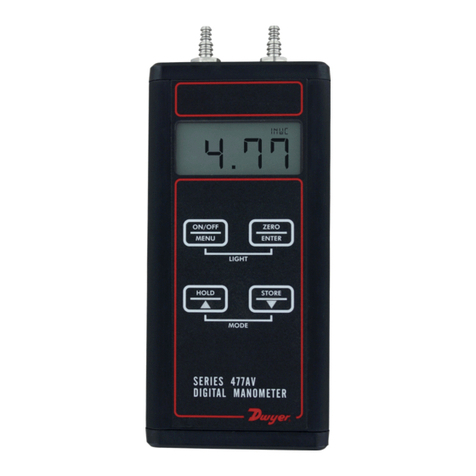
Dwyer Instruments
Dwyer Instruments 477AV Series Specifications-installation and operating instructions
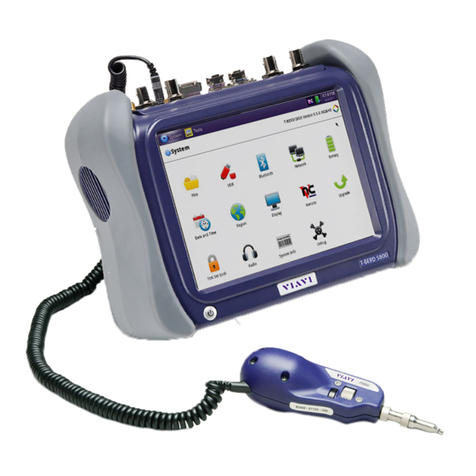
Viavi
Viavi T-BERD MTS 5800 Quick Card
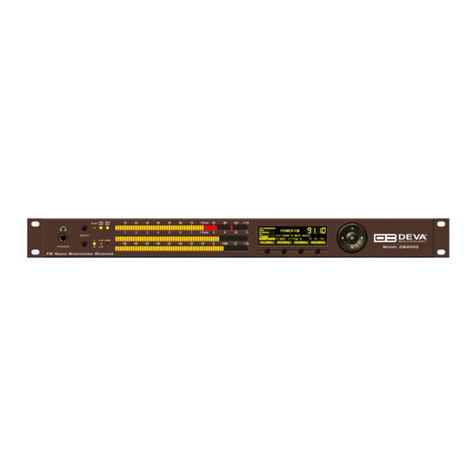
DEVA Broadcast
DEVA Broadcast DB4005 Quick user guide
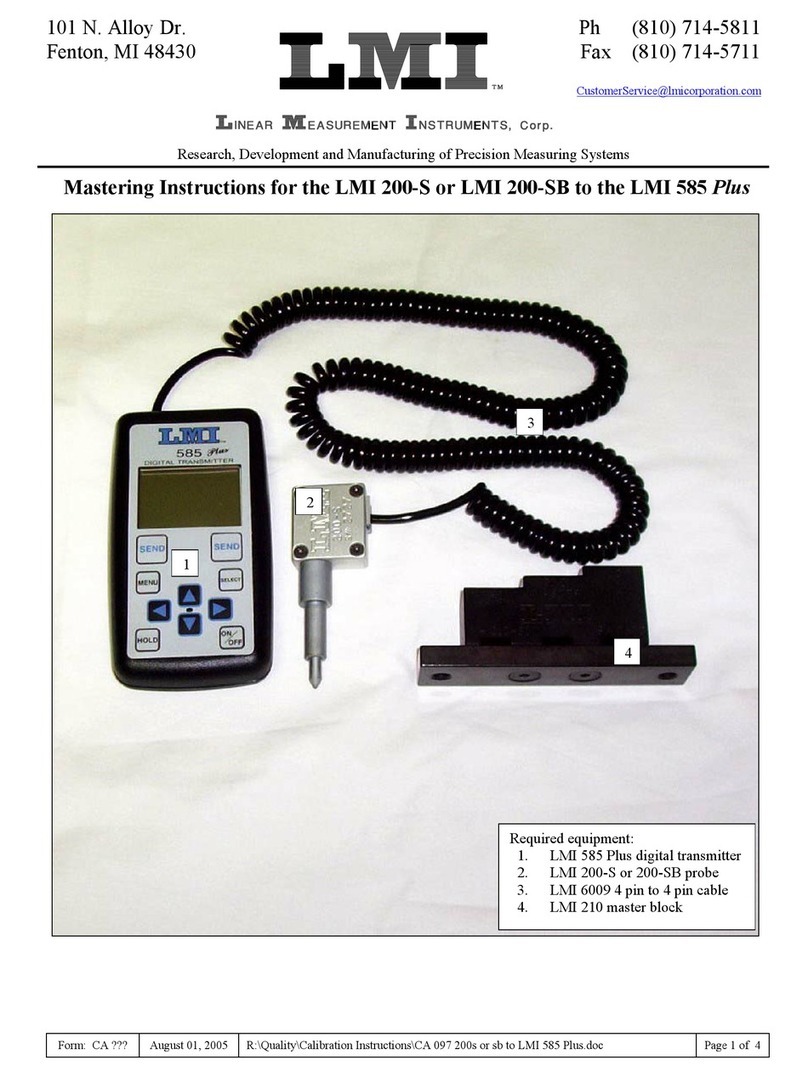
LMI
LMI 585 Plus Mastering Instructions
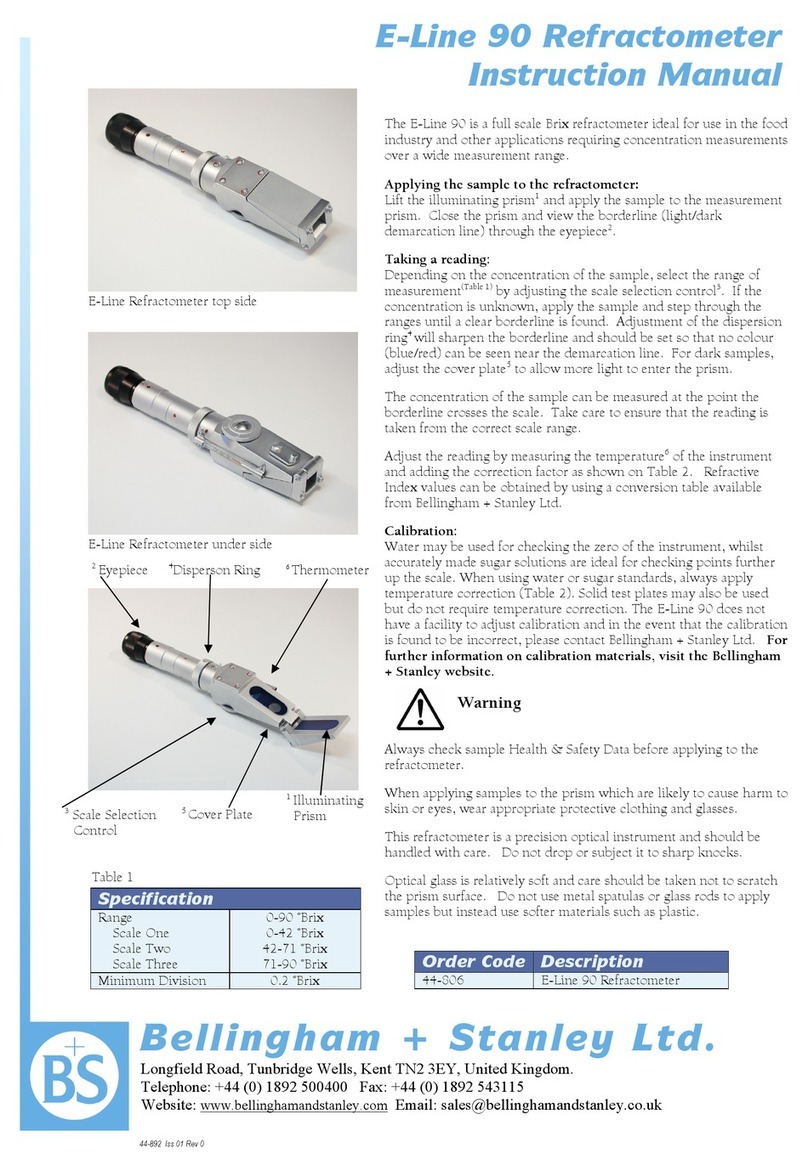
Bellingham + Stanley Ltd.
Bellingham + Stanley Ltd. E-Line 90 instruction manual
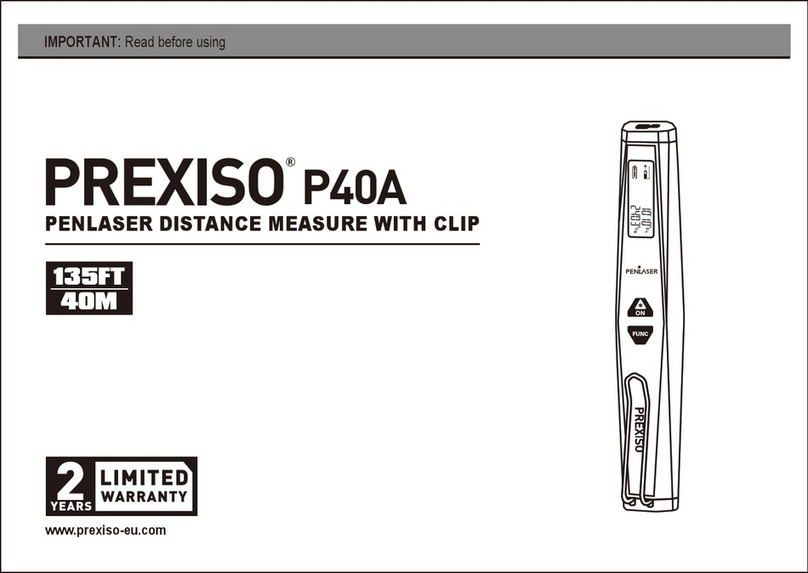
Prexiso
Prexiso P40A manual
